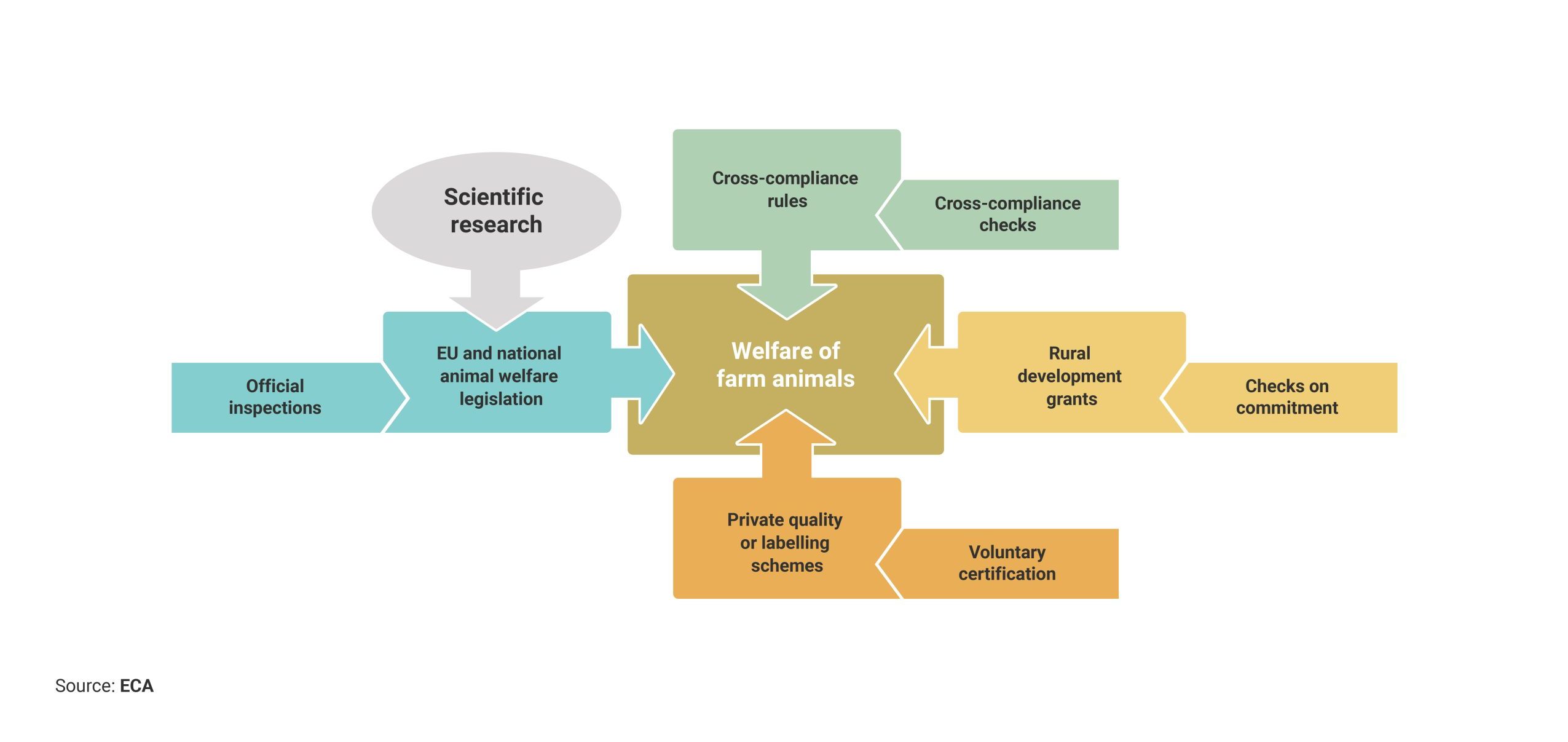Best Practice Guides
The EU has some of the world’s highest regulatory animal welfare standards, which include general requirements on the rearing, transport and slaughter of farm animals and specific requirements for certain species, in line with current scientific evidence and employs different policy levers to achieve this.

Figure 1. Actions in the EU with an impact of animal welfare
Enshrining good practice in legislation is one such policy lever, and there are important regulations covering the welfare of farmed animals, and specifically calves, however, there are no regulations covering the unique requirements of dairy cows. Since 2008 when the minimum standards for calves were defined in legislation, there have been significant scientific advances in our understanding of calf needs, management and risk factors for poor welfare. A second policy lever to enable more agile dissemination of new understandings and implementation of changes on farms are guidelines for best practices, which are able to go beyond the legal minima and be regularly updated.
Best practice guidelines that draw on both scientific literature and innovative farm and supply chain practices may deliver real benefits and offer a means of preparing industry for new regulations.
The Care4Dairy consortium have collaborated to produce 4 best practice guides covering 4 life stages of animals included in the dairy industry: calves, heifers, cows and end- of- career animals. Where applicable for bulls also, this has been indicated in the relevant text, although this life stage group was not within the direct scope of this project.
For the purposes of this project: calves are defined as bovines from birth to 12 months of age; heifers are usually 13- 24 months of age; adult cows are 2 years plus and: end of career- animals can be any age between 2 until their productive life ends either due to natural culling, illness or injury.
The Farm to Fork Strategy adopted by the Commission on 20 May 2020 announced that the Commission will, by the end of 2023, revise the animal welfare legislation to align it with the latest scientific evidence. In addition, the revision will broaden its scope, make its enforcement easier and ultimately ensure a higher level of animal welfare.
The Commission plans to revise the following pieces of legislation: the Directive on the protection of animals kept for farming purposes ,four Directives laying down minimum standards for the protection of laying hens, broilers, pigs and calves; and the Regulations on the protection of animals during transport and at the time of killing.
In view of this revision, the Commission is preparing an Impact Assessment, whose objective is to assess the economic, social and environmental impact of the envisaged changes to the EU animal welfare legislation.


